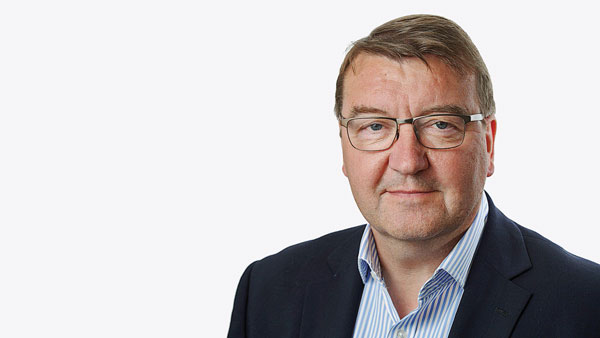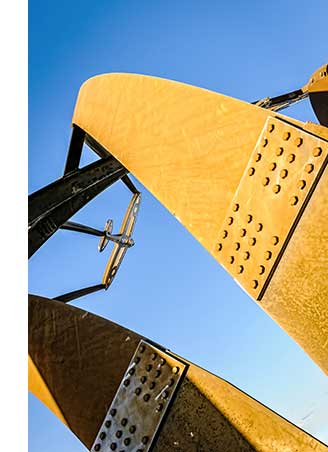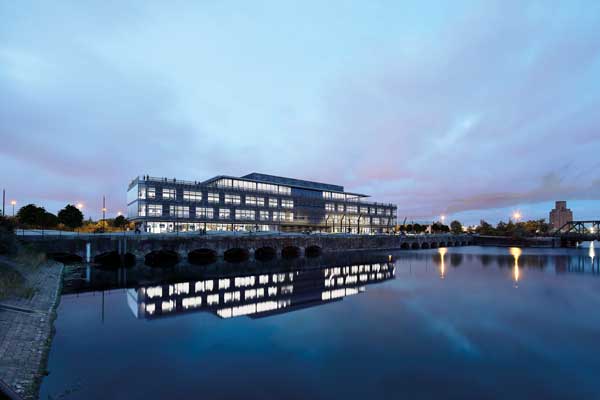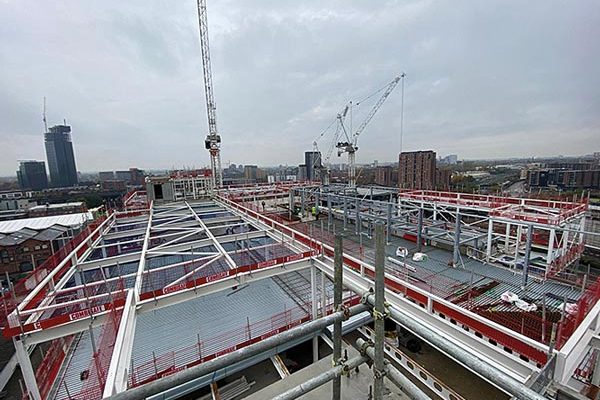Projects and Features
Nature calling

As part of innovative plans to compensate for potential impacts of a nearby windfarm, three steel-framed artificial nesting structures have been installed along the Suffolk coastline to house a vulnerable species of seabird.
FACT FILE
Artificial Nesting Structures (ANS), Lowestoft
Main client: Ørsted
Main contractor: Red7Marine
Structural engineer: Royal Haskoning
Steelwork contractor: Four-Tees Engineers
Steel tonnage: 195t
Described as a first of its kind, Ørsted (a global leader in offshore wind), has commissioned three steel-framed artificial nesting structures (ANS) specially-designed to house kittiwake.
The structures are located approximately 1km offshore – with one close to the Minsmere Nature Reserve and the other two located near South Beach, Lowestoft. These nearshore locations place the structures close to existing, thriving kittiwake colonies, while minimising disturbance to local residents and business owners. The scheme is also part of innovative plans to compensate for potential impacts of the Hornsea 3 windfarm on the species.
Despite a lack of suitable natural nesting sites, such cliffs in Suffolk, black-legged Kittiwake have colonised the area and populations are expanding, highlighting its ecological suitability. This makes east Suffolk one of the most likely places for artificial structures to be colonised quickly and for the compensation measures to have the highest chance of success.
Each ANS comprises of an octagonal topside, measuring 7m-high and 9.5m-wide, founded on a 1.6m-diameter monopile. The piles protrude above the waterline and have an embedded depth of 30m below the seabed.
Working on behalf of main contractor Red7Marine, Four-Tees Engineers fabricated, supplied and helped install each of the three topside ANS elements.
“The topsides each weigh approximately 65t and are fabricated from a variety of sections and plate,” explains Four-Tees Managing Director Tim Stedman.
Designed around a circular sleeve that connects to a monopile, the topside’s frame includes a series of RHS 450mm x 250mm x 8mm members that radiate outwards from a central point. These sections connect to eight similar rectangular hollow sections (RHS) that form the outer octagonal shape. This part of the steel frame also supports a steel panel flooring system.
Eight columns support the ANS walls and are topped by an outer ring of CHS members that in turn connect to 300mm x 200mm x 6.3 RHS sections that form the roof and rake towards a central node.
Within the eight sides of the structure, seven have steel panels containing alternating rows of fully partitioned, open, and semi-partitioned ledges with a capacity for 500 breeding pairs of kittiwake. This experimental design will provide valuable insight on the nesting preferences of kittiwake and help inform future compensation projects for the industry.
The artificial nesting structures were designed by a team of ecologists, architects, and engineers to ensure they are attractive to kittiwake and fit in with the landscape. For example, they have narrow ledges and vertical sides to replicate the cliffs where kittiwake would naturally nest.
Individual nesting spaces are fitted with a sliding perspex panel, which will allow researchers to view the kittiwake from inside the structures without the birds being able to see them, as well as allowing for safe handling for monitoring purposes.
Allowing researchers access into the structure, the eighth side of the topside is fitted with a set of double doors, a platform and a ladder.
“We did a trial erection and fit-out of each ANS at our facility, before the steelwork was painted white and delivered to a dockside assembly site in Lowestoft,” adds Mr Stedman. “It was important to make sure everything fitted together correctly before the ANS were installed. The project brief was to minimise the work that needed to be done out at sea.”
Once in Lowestoft, the steel-framed topside structures, along with all of the associated elements, were re-assembled on temporary trestles, before the completed structures were lifted on to a jack-up barge.
Once the barge was in the correct maritime location, the construction sequence for each of the three ANS could commence. The first task was to install each supporting monopole and driving it to the required depth.

Following this, the topside fixtures were grouted into position and the topside structures lifted and bolted onto the structure. Navigation lights and systems were also installed.
The nesting structures will be monitored every year to count the number of birds, occupied nests, and their productivity. In addition, monitoring systems are in place for the existing kittiwake colonies in north east England and east Suffolk and the results will all be shared with local groups such as the Lowestoft Kittiwake Partnership.
Kristen Branford, Managing Director at Red7Marine comments: “We are delighted to announce the successful completion of the project involving the installation of three artificial nesting structures.
“These structures will play a crucial role in supporting an important and vulnerable species, whilst enabling the generation of clean, green electricity for the Hornsea 3 project. This project is the first of its kind and required meticulous planning and consideration, and we are proud to have achieved this significant milestone.
Our success in delivering this project was greatly attributed to effective supply chain management. With multiple interfaces involved, we recognised the importance of coordination and collaboration to meet project timelines.”
Eleni Antoniou, Environmental Manager at Ørsted, says: “Kittiwake are listed as at risk from extinction and with climate change as a key driver to their decline, a move towards a green energy system could help considerably in the long-term conservation of the species. In the meantime, the provision of these structures will provide a safe, nesting space to enable future generations to raise young away from predators and out of town centres.”















